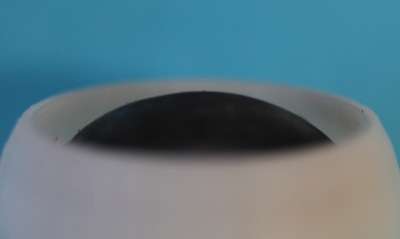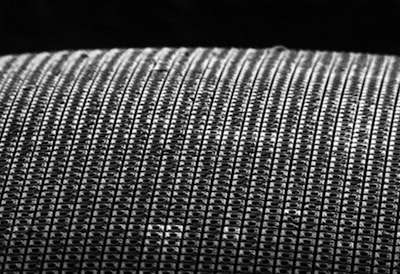New imaging system brings lobster-eye design down to scale

(Phys.org) —Scientists have long sought to emulate the fascinatingly structured compound eyes that allow lobsters to see their way along brackish seabeds. So far, it's worked only in huge X-ray devices used for astronomy.
However, a new artificial compound eye developed at the University of Wisconsin-Madison harnesses the concept to use the visible light spectrum, and at a much smaller scale. Its potential application areas range from medicine to astronomy to the military.
Hongrui Jiang, the Lynn H. Matthias Professor in Engineering and Vilas Distinguished Achievement Professor of Electrical and Computer Engineering at UW-Madison, announced the advance in a paper published April 24, 2014, in the journal Small. The lobster-inspired system represents a breakthrough in both optical imaging and micro-scale fabrication.
While most compound eyes occurring in nature rely on multiple lenses, the lobster eye comprises a spherical array of very small reflecting chambers that focus the available light into a single image with a 180-degree field. Because it's based on reflection, Jiang says, this design offers an advantage over conventional imaging, in which a lens uses refraction and can create color distortions known as the chromatic aberration.

"Because of refraction, you can lose about 20 percent of the light's intensity," Jiang says. "But with internal reflection, we can cut down on that loss."
Jiang's research, funded by the National Science Foundation's Emerging Frontiers in Research and Innovation program, has yielded a small artificial compound eye that offers high-acuity motion detection and detailed imaging in dark environments.
Creating the device at a small scale meant overcoming formidable hurdles in micro-scale fabrication. To accurately mimic the workings of the lobster eye, the researchers had to arrange an array of mirror boxes—each about 60 microns deep and 20 microns by 20 microns across—in a perfectly spherical shape. And to be reflective, the insides of those boxes must be smoothed, then coated with aluminum. The solution, as presented in the Small paper, is to create a perfectly rounded polymer dome, stretch and flatten it, arrange about 168,100 mirror boxes on top of it, then release the dome back to its hemispherical shape.
"This is the first time we've made a life-sized device of this kind. It's 1.5 centimeters," Jiang says.
To test the design, Jiang and his team embedded the tiny mirror-box array in a 3D-printed plastic casing and put the compound eye up against a conventional lens. The resulting images show the compound eye performing with clear detail and much less color distortion—all without any post-image processing, Jiang points out.
The current experimental model uses a ground-glass screen to capture the light that reflects through the mirror boxes, so the researchers' next step is to create a complete system that incorporates a hemispherical sensor. "We've made the eye but haven't made the retina yet," Jiang says.
Journal information: Small
Provided by University of Wisconsin - Milwaukee



















